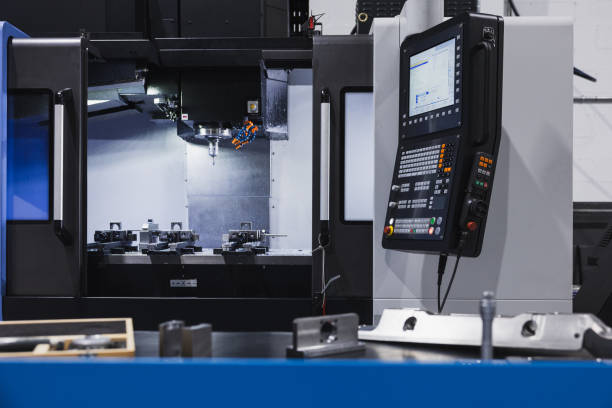How to CNC Machining
CNC (Computer Numerical Control) machining is a revolutionary technology that has reshaped modern manufacturing. It combines the precision of computer programming with the raw power of cutting-edge machines to create parts and components from a wide variety of materials. Whether you are a beginner eager to learn about CNC machining or an experienced professional looking to hone your skills, this comprehensive guide will help you navigate through every step of the CNC machining process, from the basics to more advanced insights. Let’s dive into what it takes to effectively set up and use CNC machines.
Understanding CNC Machining: An Overview
CNC machining is a subtractive manufacturing process, which means it removes material from a workpiece to achieve the desired shape. Unlike traditional manual machining, CNC machines use computer programs to dictate movements, allowing for a high degree of precision and repeatability.
Key Components of a CNC Machine
- Machine Bed: The machine bed is the foundation that provides stability and support for the machining process. It should be rigid to prevent vibrations.
- Spindle: The spindle is the part of the CNC machine that holds the cutting tool and rotates at various speeds to cut the material. For example, a high-performance 7.5KW ER32 Air-Cooled Spindle is an excellent option for large-scale machining projects.

- Tool Holder: This component holds the cutting tools, which can include drills, end mills, or other types of cutting tools.
- Control System: The control system, usually a computer, interprets G-code to direct machine movements, speed, and more.
What Makes CNC Machining Unique?
- Precision: CNC machines achieve extremely tight tolerances, making them ideal for parts that require precision.
- Automation: CNC machining reduces the need for manual intervention, allowing for continuous operation and higher productivity.
- Versatility: CNC machines can work on materials ranging from soft plastics to hardened steel, making them versatile for various industries.
Types of CNC Machining Processes
There are several types of CNC machining processes, each designed for a different purpose and material type.
CNC Milling
CNC milling is the process of cutting a material using a rotating cutting tool that moves along multiple axes. It is commonly used for creating complex geometries and includes operations like slotting, contouring, and pocketing.
- 3-Axis Milling: Most common for straightforward machining tasks.
- 5-Axis Milling: Allows for more intricate cuts by tilting the cutting tool along multiple angles.
CNC Turning
In CNC turning, the material rotates while a stationary tool shapes it. This process is mainly used for cylindrical parts, such as shafts and bushings.
- Applications: Ideal for making symmetrical components like bolts, screws, and bushings.
CNC Laser Cutting
Laser cutting uses a focused laser beam to cut materials. It is highly accurate and used for materials that are difficult to machine traditionally, like metals, plastics, or even thin wood sheets.
- Examples: The 60000RPM 300W ER8 Water-Cooled Spindle works well in laser-guided CNC setups for smaller, intricate parts.
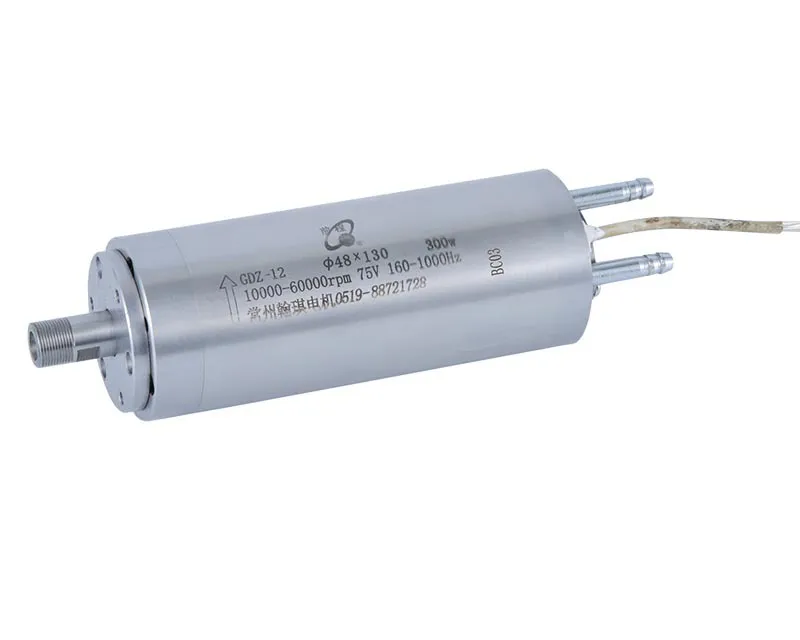
CNC Router
A CNC router is typically used for cutting softer materials like wood, plastic, or foam. It is perfect for larger workpieces that require precise detailing, making it a popular choice for furniture making and sign carving.
Steps Involved in CNC Machining
To create a part using CNC machining, you need to go through several key steps, from designing the part to executing the cutting process. Here are the major steps involved:
Step 1: Design the Part
The first step is creating a 3D model of the part you want to manufacture using CAD (Computer-Aided Design) software such as SolidWorks, Fusion 360, or SketchUp.
- CAD Software: Allows you to create and visualize the design.
- Consider Material: Different materials have unique properties, affecting how they are machined. Aluminum is often used due to its versatility and machinability.
Step 2: Generate G-Code Using CAM Software
Once the part is designed, you use CAM (Computer-Aided Manufacturing) software to generate G-code. G-code is the language that tells the CNC machine how to move, where to cut, and at what speed.
- Fusion 360: Offers both CAD and CAM solutions.
- Mastercam: Specialized CAM software for generating complex tool paths.
Step 3: Setting Up the CNC Machine
- Load the Material: Secure the material onto the machine bed using clamps or a vice.
- Load the Tool: Select the correct cutting tool based on the material and operation required. The 24000RPM 800W ER11 Water-Cooled Spindle can be used for precision cutting.
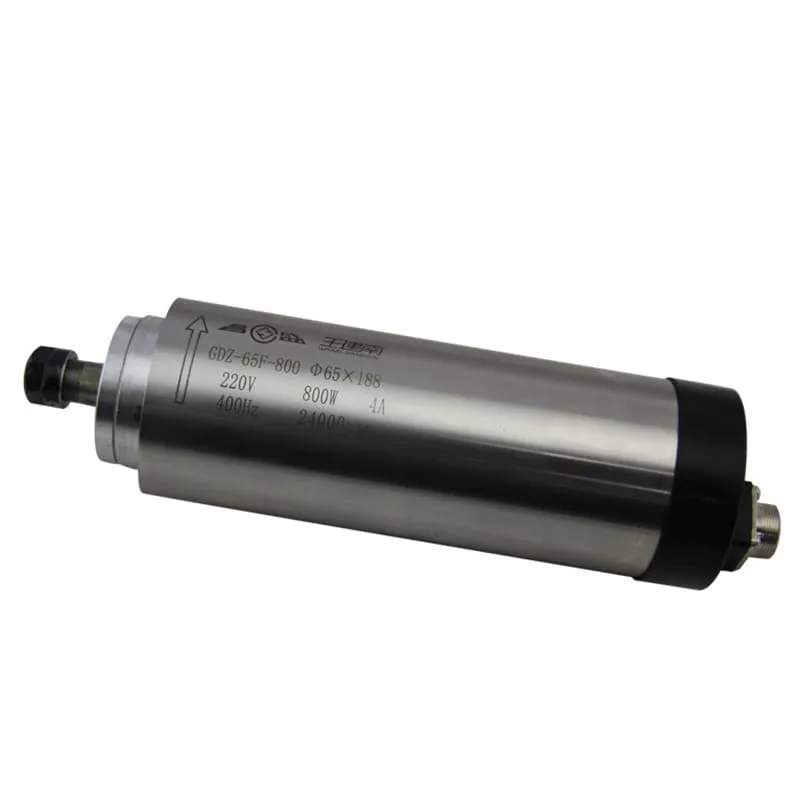
Step 4: Setting Zero Points
In CNC machining, setting a zero reference point is essential. This is where the tool starts cutting, and it defines the origin of the coordinate system for the part.
- Tool Touch Off: Using a tool touch-off process ensures precise depth cuts and consistent quality.
- Work Coordinate System (WCS): Set up the WCS to define the relationship between the workpiece and the cutting tool.
Step 5: Executing the Program
Once everything is set up, run the G-code program to begin the machining process.
- Monitor the Machine: Watch for unusual sounds or movements. This helps identify potential issues early, like tool wear or incorrect offsets.
- Coolant: Use coolant to keep the cutting tool and workpiece from overheating, which ensures longer tool life and better finishes.
Essential Tools and Equipment for CNC Machining
Selecting the right tools and equipment for your CNC machine is crucial for achieving high-quality results. Here are some key tools you need to consider:
Spindle Motors
The spindle motor is the core of the CNC machine. Choosing the right spindle, such as a 5.5KW ER32 4-Pole Air-Cooled Spindle, can significantly affect machining performance, especially when dealing with harder materials. 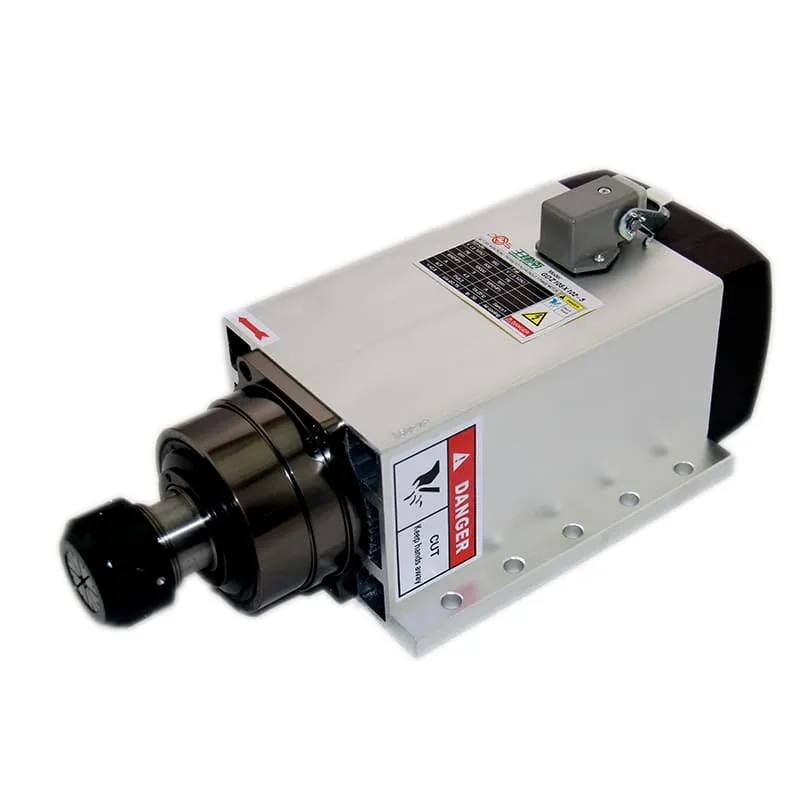
Cutting Tools
- End Mills: Used for cutting slots, profiles, and holes in a part.
- Drills: For creating holes in the workpiece.
- Ball Nose Tools: Ideal for 3D contouring and smooth finishing.
Tool Holders
Tool holders keep the cutting tools in place. They come in different types based on the tool and operation—such as collet chucks or end mill holders.
Common CNC Machining Materials
Different materials require different handling and machining approaches. Here are some popular CNC machining materials and what makes them unique:
Aluminum
- Advantages: Lightweight, corrosion-resistant, and easy to machine.
- Applications: Widely used in aerospace and automotive industries for parts like brackets and housings.
Steel
- Advantages: Strong and durable, suitable for parts requiring high strength.
- Challenges: Harder to machine compared to softer materials like aluminum.
Plastics
- Advantages: Lightweight and easily machinable. Great for prototyping.
- Applications: Used for casings, brackets, and consumer goods.
Wood
- Advantages: Can be easily shaped, making it ideal for CNC routing.
- Applications: Widely used in furniture, moldings, and decorative pieces.
Optimizing Your CNC Workflow
The efficiency of a CNC machining process is not only about the cutting but also about how you manage the workflow. Here are some tips to optimize your CNC machining process:
Use High-Quality Spindles
Investing in a high-quality spindle like the 24000RPM 3.2KW ER20 Water-Cooled Spindle can improve precision and reduce errors. 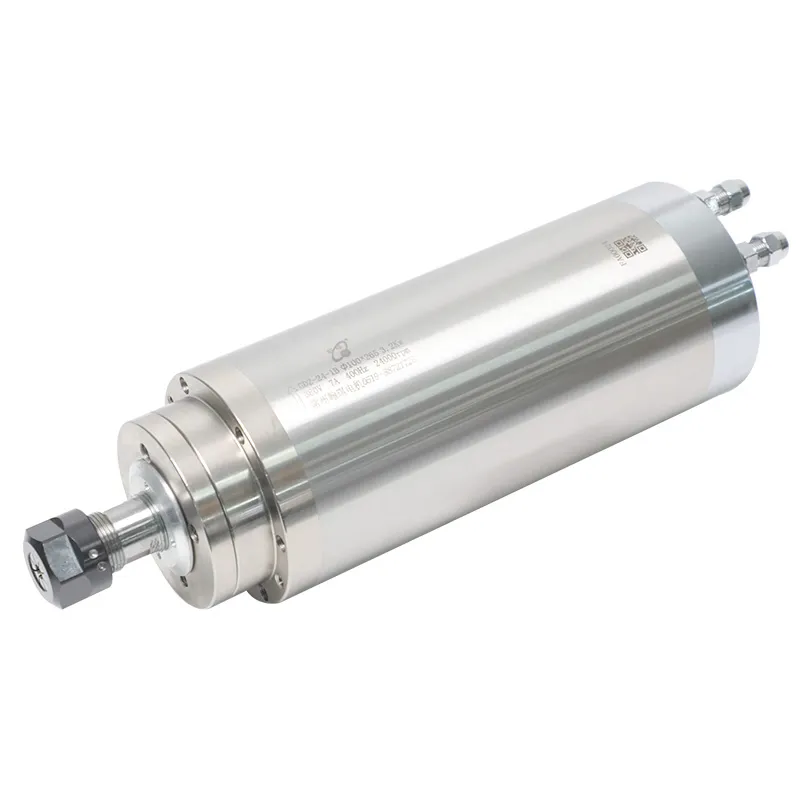
Choose the Right Tool Paths
- Adaptive Tool Paths: Adaptive clearing paths remove material efficiently and reduce tool wear.
- Finish Passes: Use finish passes to create a smooth surface after roughing operations.
Minimize Tool Changes
Reducing tool changes can greatly improve efficiency, especially when machining multiple parts. Group similar operations together to reduce tool swaps.
FAQs
1. What is the importance of G-code in CNC machining?
G-code is the programming language that controls the CNC machine’s actions. It tells the machine how to move, where to cut, and at what speed, making it fundamental to the CNC process.
2. How do I choose the right spindle for my CNC machine?
The right spindle depends on the material you are machining and the precision you need. For harder materials, a high-power spindle like the 5.5KW ER32 Air-Cooled Spindle is ideal.
3. What are the benefits of CNC milling compared to traditional machining?
CNC milling provides higher precision, repeatability, and the ability to machine complex geometries compared to traditional, manual methods.
4. What safety precautions should I take while CNC machining?
Always wear safety goggles, use guards, and make sure the machine is properly maintained. Never leave a running machine unattended.
5. How does CAM software contribute to CNC machining?
CAM software generates the tool paths that are translated into G-code, making it easier to create precise and complex parts.
Conclusion
CNC machining is an exciting and intricate process that opens up endless possibilities for manufacturing and prototyping. From understanding the basic types of CNC machines to mastering the software and selecting the right tools, each step plays a crucial role in ensuring successful machining. Choosing the right spindle motors, tools, and materials is critical to achieving the desired precision and quality.
Visit spindlemotorshop.com for a variety of high-quality spindles and other essential CNC components that will elevate your machining projects. With continuous practice and the right resources, you can refine your skills and take on more complex projects, pushing the boundaries of what CNC machining can achieve. Start today and unlock the potential of precision manufacturing with CNC technology.

